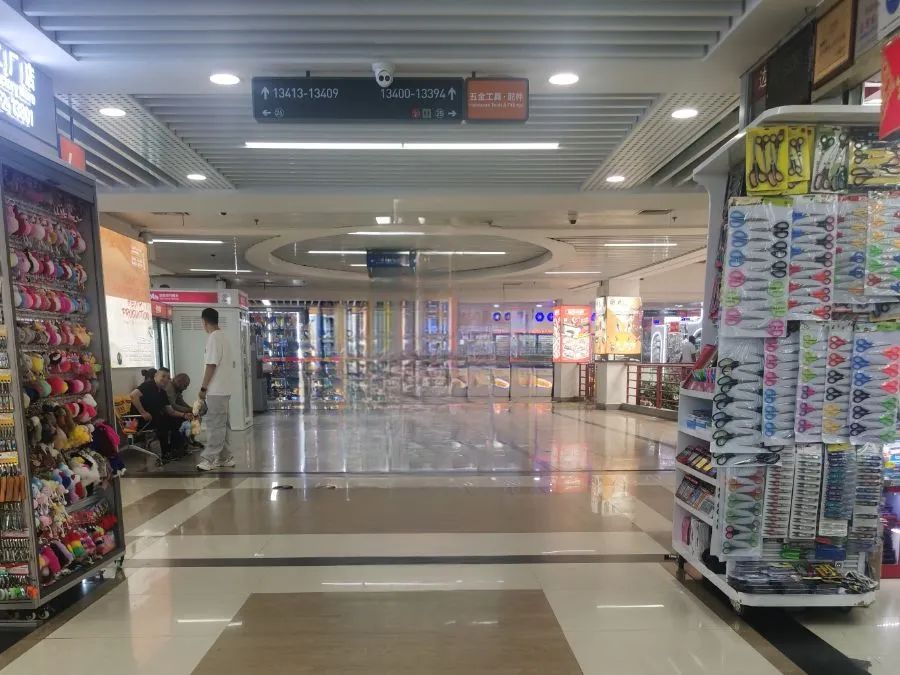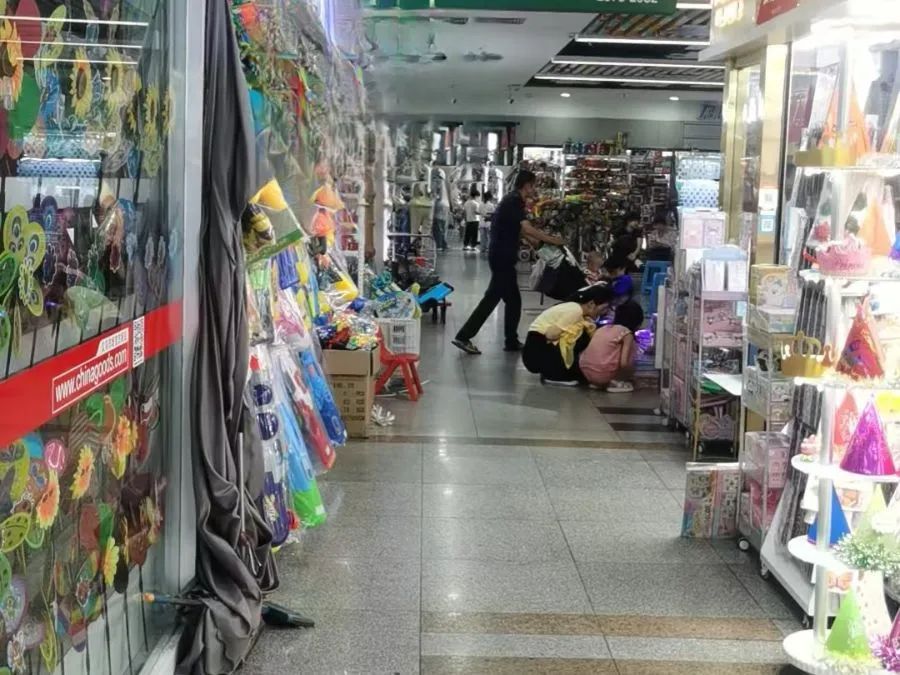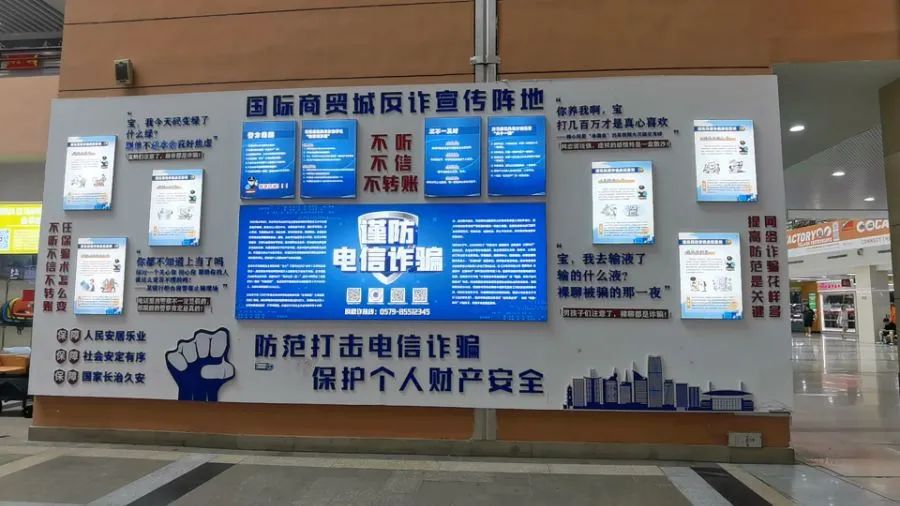Most merchants reported that they had not heard of stablecoins, and only a few merchants supported stablecoin payments.
Author: Bian Wanli
The popularity of stablecoins remains high, with attention gradually shifting to practical application scenarios. Recently, market news has emerged that Yiwu has already seen cases of foreign trade goods being paid for with stablecoins, making it a focal point once again.
A report from Huatai Securities shows that "in Yiwu, the world’s small commodity center, stablecoins have become an important tool for cross-border payments. Blockchain analysis company Chainalysis estimates that in 2023, the on-chain stablecoin flow in the Yiwu market exceeded $10 billion." Some online posts claim, "Over 3,000 merchants in Yiwu are using USDT and other stablecoins for payments, with monthly transactions exceeding $1 billion, saving nearly 10 million RMB in fees!"
So, what is the real situation regarding the use of stablecoins in Yiwu?
To find out, a reporter from the 21st Century Economic Report conducted an on-site investigation into the use of stablecoins in Yiwu.
When asked if stablecoin payments were accepted, most merchants stated that they had not heard of stablecoins and did not understand them; some merchants raised questions about compliance and costs; only a few merchants supported stablecoin payments.
Most Merchants Report Lack of Understanding of Stablecoins
Yiwu International Trade City is the largest small commodity distribution center in the world. Since the first generation of small commodity markets in 1982, it has undergone six relocations, ten expansions, and five generations of upgrades, gradually developing into its current scale. Data shows that it has a business area of over 6.4 million square meters and 75,000 business positions; it gathers 26 major categories and over 2.1 million types of small commodities; every year, more than 560,000 foreign merchants come to Yiwu for procurement, and over 15,000 foreign merchants from more than 100 countries and regions choose to reside in Yiwu, with their goods exported to 233 countries and regions worldwide.

Yiwu International Trade City Photo/21st Century Economic Report

Yiwu International Trade City Photo/21st Century Economic Report
Upon entering Yiwu International Trade City, visitors are constantly coming and going, but the hot phenomenon of stablecoin usage rumored in the market was not observed. The reporter, posing as a consumer, inquired with merchants whether stablecoins or U (a colloquial term for stablecoins like USTD and USDC) could be used for payment. The majority of merchants' first reactions were: "What payment?" "What is U payment?" "I don't know, I don't understand stablecoins, I've never heard of them."
The so-called "stablecoin" is a type of digital asset that maintains its value stability by being pegged to reserve assets (such as fiat currency like the US dollar). Compared to traditional cryptocurrencies like Bitcoin and Ethereum, its price is linked to low-volatility assets and is not directly determined by market supply and demand. This stability makes it a tool for payment and value storage in on-chain ecosystems.
Since digital currency transactions have no geographical restrictions and are less regulated than traditional finance, the convenience of cross-border transfers using stablecoins is strong. For example, traditional cross-border wire transfers usually take 2-3 business days and incur high transfer fees. In contrast, USDT (a type of stablecoin) transactions take about 2 minutes and have lower transfer fees. This is also a core reason why some market participants are optimistic about the cross-border use of stablecoins.
During the reporter's visits, some merchants expressed interest in stablecoins or had some understanding of them.
Some foreign trade merchants admitted that some overseas clients had asked whether they could pay with USTD or USDC.
A merchant with a study abroad background told the reporter, "I pay attention to stablecoins, but I haven't used them yet."
Other merchants said, "The costs are too high; we don't use them."
Some merchants raised concerns, "Is it compliant? Will our accounts be frozen?"
However, there are indeed a few merchants who clearly stated that stablecoin payments could be accepted, but they were unwilling to provide more details.
Several informed sources pointed out that some foreign trade merchants with wallets (specifically referring to virtual currency wallets) might privately use stablecoins for transactions. For example, some merchants who trade cryptocurrencies may hold stablecoins and have a certain demand for them. Others may need to find U merchants (intermediaries engaged in the dual exchange of fiat currency and stablecoins) to convert stablecoins into fiat currency (USD or RMB).
A local bank employee in Yiwu told the reporter, "In the past two years, some intermediaries have emerged in Yiwu. These intermediaries buy USD stablecoins like USTD at prices below $1, such as $0.98-$0.99, and then sell them to merchants who need stablecoins at prices above $1, such as $1.03. There are indeed some merchants who have demand, especially when doing business with buyers from countries and regions with significant currency exchange rate fluctuations, they occasionally use them." For merchants, converting fiat currency to stablecoins and then back to fiat currency also incurs costs.
Online rumors state, "Over 3,000 merchants in Yiwu are using USDT and other stablecoins for payments, with monthly transactions exceeding $1 billion," and "In Yiwu, the world’s small commodity center, stablecoins have become an important tool for cross-border payments," estimating that "the on-chain stablecoin flow in the Yiwu market exceeded $10 billion in 2023." In response, a person in Yiwu who has been closely following virtual currencies stated, "As far as I know, there is no large-scale use of stablecoins among merchants in Yiwu; at least the people around me have no intention of settling with stablecoins."
Another entrepreneur focused on cross-border e-commerce admitted, "While it cannot be ruled out that some cross-border e-commerce businesses use stablecoin payments, most should still be using traditional banks or third-party payment methods for settlement."
The reporter noted that recently, an investor asked on an interactive platform about the small commodity city (SH600415): "I heard an expert at a stablecoin forum mention that 30% of the transaction volume in Yiwu small commodities is settled using stablecoin USDT. Can you provide accurate data on this? If not, what is the current situation in this area for the company?"
The company responded: "The company operates the world's largest small commodity trading market, maintaining trade relations with over 230 countries and regions, with a high proportion of trade with countries involved in the 'Belt and Road' initiative, naturally possessing a vast and high-frequency cross-border trade settlement scenario. The company actively explores the use of financial technology to enhance the level of trade facilitation. Innovative payment tools like stablecoins have the potential to provide more efficient and low-cost cross-border payment solutions for global merchants, especially small and medium-sized enterprises, aligning with our mission to serve real trade. The company is committed to combining its vast advantages in real trade scenarios with financial technology innovation to create greater value for global merchants and contribute to the circulation of daily consumer goods."
At the same time, the small commodity city also stated that currently, the company does not have information on the use of stablecoins in the Yiwu market and related data. If there are any developments in this area, investors are advised to pay attention to the company's subsequent announcements.
The Practical Use of Stablecoins is Influenced by Multiple Factors
Emerging technologies such as blockchain and distributed ledgers have driven the rapid development of central bank digital currencies and stablecoins, achieving "payment equals settlement," fundamentally reshaping the traditional payment system and significantly shortening the cross-border payment chain. Compared to traditional cross-border payment models, the core advantage of stablecoins lies in their ability to bypass the multi-layered intermediary structure based on agency behavior in traditional models, thereby shortening settlement times and saving transaction costs.
Specifically, stablecoins facilitate peer-to-peer value transfer through a shared distributed ledger, compressing processes that would typically require multiple institutions into a single or few on-chain transactions, thus reducing settlement times from days to minutes or even seconds, and lowering costs to predictable network transaction fees. Additionally, in terms of cost structure, the traditional system relies on networks like SWIFT, which involve messaging communication fees, foreign exchange transaction costs, and liquidity reserve costs, while stablecoins leverage blockchain structures to minimize transaction costs.
Despite the many advantages of stablecoins in cross-border payment scenarios, large-scale practical use is not as vibrant as envisioned.
A merchant named Chen Jun (pseudonym), who has been following virtual currencies for a long time, said, "Foreign trade companies can receive export tax rebates through traditional settlement methods, which provides an incentive for merchants not to use stablecoins."
In simple terms, export tax rebates refer to the government refunding the value-added tax and consumption tax that enterprises have already paid during production and circulation back to them after the goods are exported. According to regulations, different types of goods have varying export tax rebate rates, typically ranging from 6% to 13%, meaning that export tax rebates can become a profit point for enterprises.
As an internationally accepted practice, export tax rebates can effectively reduce the overall tax burden on exported goods to zero, avoiding international double taxation. Export tax rebates help enhance the competitiveness of domestic products in the international market and are adopted by countries worldwide. Current data shows that the total amount of export tax rebates (and exemptions) in Yiwu for the entire year of 2023 reached 12.071 billion RMB, a year-on-year increase of 14.78%, with export tax rebates processed amounting to 10.625 billion RMB, a year-on-year increase of 7.39%, marking the first time export tax rebates have exceeded 10 billion RMB.
Chen Jun further pointed out, "Merchants have a relatively high demand for funds. The bank transaction data retained through traditional payment methods can serve as a basis for bank loan reviews, helping merchants obtain loans from banks to maintain normal business operations. Additionally, export orders and bank transaction data can also serve as a basis for applying for exhibition booths at large trade fairs. Generally, the larger the export scale, the larger the booth that can be applied for."
Large trade fairs, similar to the Canton Fair, are important channels for foreign trade enterprises to acquire customers and secure orders. For example, as of May 4, 2025, at the 137th Canton Fair, nearly 290,000 foreign buyers from 219 countries and regions attended, a year-on-year increase of 17.3% compared to the 135th Canton Fair; on-site intended export transactions reached $25.44 billion, an increase of 3%.
Moreover, while using stablecoins for payments incurs almost zero fees, some practical issues must still be considered. On one hand, there are cost issues, including the costs of exchanging stablecoins for fiat currency and the unavoidable costs of currency conversion. On the other hand, there are risk issues, such as potential money laundering risks and the possibility of account freezes, which can significantly impact the normal operations of foreign trade enterprises.

Yiwu International Trade City Photo/21st Century Economic Report
It is worth noting that regarding whether to apply for a stablecoin license in Hong Kong, Yiwu Small Commodity City is closely monitoring the regulatory framework for stablecoins in Hong Kong and may submit an application through its "Yi Pay" platform at an opportune time in the future.
On June 18, the Small Commodity City stated on an interactive platform: "We welcome and support Hong Kong's positive progress in the regulatory framework for stablecoins. The company's cross-border payment platform 'Yi Pay' will continue to pay attention to the relevant regulatory process and will actively evaluate and submit relevant applications as soon as the regulations are clear and the path is smooth."
免责声明:本文章仅代表作者个人观点,不代表本平台的立场和观点。本文章仅供信息分享,不构成对任何人的任何投资建议。用户与作者之间的任何争议,与本平台无关。如网页中刊载的文章或图片涉及侵权,请提供相关的权利证明和身份证明发送邮件到support@aicoin.com,本平台相关工作人员将会进行核查。




